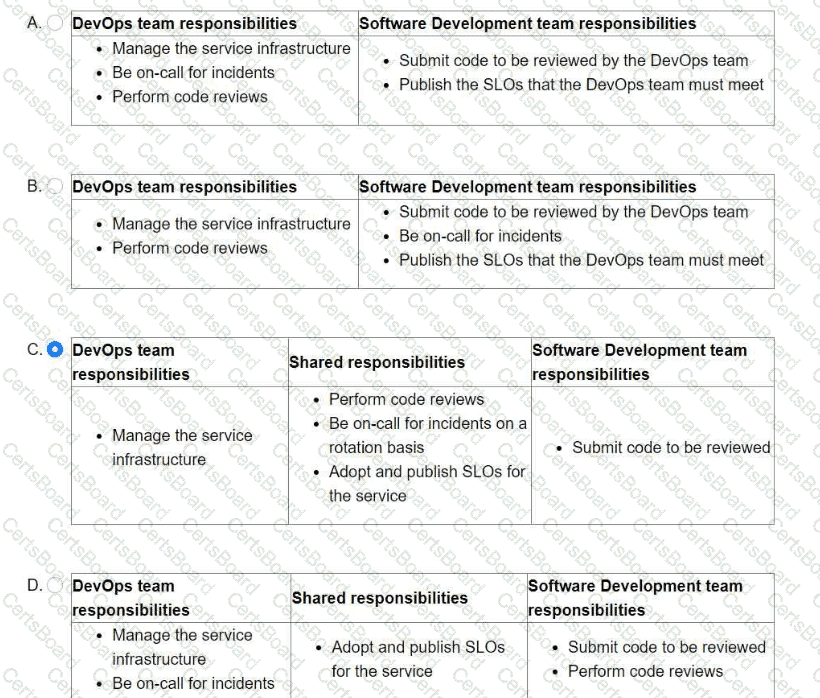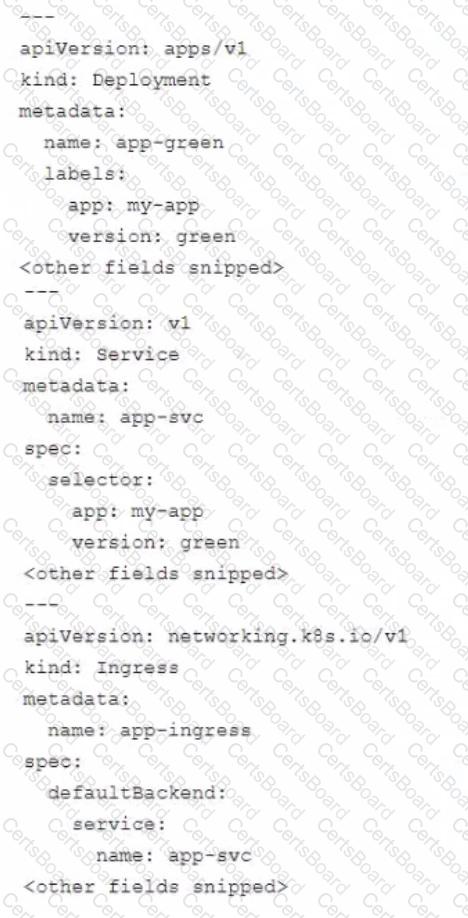You recently migrated an ecommerce application to Google Cloud. You now need to prepare the application for the upcoming peak traffic season. You want to follow Google-recommended practices. What should you do first to prepare for the busy season?
Your company follows Site Reliability Engineering practices. You are the person in charge of Communications for a large, ongoing incident affecting your customer-facing applications. There is still no estimated time for a resolution of the outage. You are receiving emails from internal stakeholders who want updates on the outage, as well as emails from customers who want to know what is happening. You want to efficiently provide updates to everyone affected by the outage. What should you do?
You need to reduce the cost of virtual machines (VM| for your organization. After reviewing different options, you decide to leverage preemptible VM instances. Which application is suitable for preemptible VMs?
As a Site Reliability Engineer, you support an application written in GO that runs on Google Kubernetes Engine (GKE) in production. After releasing a new version Of the application, you notice the applicationruns for about 15 minutes and then restarts. You decide to add Cloud Profiler to your application and now notice that the heap usage grows constantly until the application restarts. What should you do?
Your team is designing a new application for deployment into Google Kubernetes Engine (GKE). You need to set up monitoring to collect and aggregate various application-level metrics in a centralized location. You want to use Google Cloud Platform services while minimizing the amount of work required to set up monitoring. What should you do?
Your team uses Cloud Build for all CI/CO pipelines. You want to use the kubectl builder for Cloud Build to deploy new images to Google Kubernetes Engine (GKE). You need to authenticate to GKE while minimizing development effort. What should you do?
You are leading a DevOps project for your organization. The DevOps team is responsible for managing the service infrastructure and being on-call for incidents. The Software Development team is responsible for writing, submitting, and reviewing code. Neither team has any published SLOs. You want to design a new joint-ownership model for a service between the DevOps team and the Software Development team. Which responsibilities should be assigned to each team in the new joint-ownership model?

You manage an application that runs in Google Kubernetes Engine (GKE) and uses the blue/green deployment methodology Extracts of the Kubernetes manifests are shown below:

The Deployment app-green was updated to use the new version of the application During post-deployment monitoring you notice that the majority of user requests are failing You did not observe this behavior in the testing environment You need to mitigate the incident impact on users and enable the developers to troubleshoot the issue What should you do?
You are performing a semiannual capacity planning exercise for your flagship service. You expect a service user growth rate of 10% month-over-month over the next six months. Your service is fully containerized and runs on Google Cloud Platform (GCP). using a Google Kubernetes Engine (GKE) Standard regional cluster on three zones with cluster autoscaler enabled. You currently consume about 30% of your total deployed CPU capacity, and you require resilience against the failure of a zone. You want to ensure that your users experience minimal negative impact as a result of this growth or as a result of zone failure, while avoiding unnecessary costs. How should you prepare to handle the predicted growth?
You need to define Service Level Objectives (SLOs) for a high-traffic multi-region web application. Customers expect the application to always be available and have fast response times. Customers are currently happy with the application performance and availability. Based on current measurement, you observe that the 90th percentile of latency is 120ms and the 95th percentile of latency is 275ms over a 28-day window. What latency SLO would you recommend to the team to publish?


